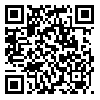Volume 17, Issue 65 (4-2008)
JGUMS 2008, 17(65): 68-76 |
Back to browse issues page
Download citation:
BibTeX | RIS | EndNote | Medlars | ProCite | Reference Manager | RefWorks
Send citation to:



BibTeX | RIS | EndNote | Medlars | ProCite | Reference Manager | RefWorks
Send citation to:
Dehnadi Moghadam A, Yousef zade chabok S, Hemati H, Shabani S. Comparison the Number of Triaged Patients in Three Working Shift in Poursina Hospital in Rasht. JGUMS 2008; 17 (65) :68-76
URL: http://journal.gums.ac.ir/article-1-329-en.html
URL: http://journal.gums.ac.ir/article-1-329-en.html
1- , Anoush17ir@yahoo.com
Abstract: (8133 Views)
Abstract
Introduction: Triage defined as selecting patients based on the severity of injury and performing the best management for the majority of patients in a short time. Triage is a strong administrative tool for providing emergency services. According to situations, it divided into: normal urgent triage and emergent condition triage. The former is performed in emergency ward of a hospital and the latter in the accident field.
Objective: Comparison of the number of triaged patients in normal urgent condition at different triage levels in accordance with months of the spring and three working shifts.
Materials and Methods: This cross-sectional retrospective study was performed in Poursina teaching hospital during three months of the spring (21 March-21 June 2006). Patients triaged in three working shifts. Data were registered in Emergency Service Work Shifts Form (approved by Ministry of Health, Treatment, and Medical Education). According to this form, patients were classified to inpatients and outpatients groups, then they allocated to one of the following levels: Emergent, Urgent, and Non-urgent.
Results: Among 30.746 admitted patients, 25.525(82.97%) were outpatients, 5.214 (16.95%) were inpatients, and 25(0.08%) died. 203(3.89%) patients transported by EMS ambulances, 960 (18.41%) by referee hospital ambulances, and 4.051 (77.70%) by themselves or others. The mean number of inpatients on night shift had a statistically significant difference of morning and evening shifts. The same was true for outpatients between morning and evening and night shifts. The majority of inpatients, 2.104 (40.30%) admitted on the night shift and the majority of outpatients, 12.443 (48.21%) on the morning shift. There was a statistically significant difference between the mean of triaged patients at the emergent and urgent levels among the three work shifts (night vs. morning and evening shifts, p< 0.05).
Conclusion: Regarding the majority of admissions on the night shift, pay more attention to this shift can play a pivotal role in saving lives. Therefore, it appears that conducting more studies about the different aspects of this issue is necessary.
Review Paper: Research |
Subject:
Special
Received: 2013/12/22 | Accepted: 2013/12/22 | Published: 2013/12/22
Received: 2013/12/22 | Accepted: 2013/12/22 | Published: 2013/12/22
| Rights and permissions | |
 | This work is licensed under a Creative Commons Attribution-NonCommercial 4.0 International License. |






